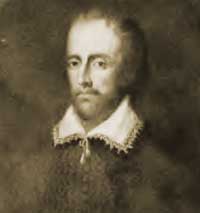English Renaissance - An Overview
The English Renaissance has a very distinct character. The efforts to establish English schools of painting or sculpture did not have much success, and the most notable paintings belong to the school of Holbein, while most of the sculptures are linked to the Italian sculptor Torrigiani.
On the other hand, the English Renaissance boasts unrivalled poetry, drama, and prose. Their sudden splendour and fertility can only be compared to the outburst of art in Italy. In 16th century England, the number of writers who have endured is almost as high as the names of painters and sculptors of the Cinquecento.

Edmund Spenser
In music, closely linked with poetry, great things were done. Dowland, Morley, Orlando Gibbons, Weelkes, Wilbye, created the madrigal, as the Elizabethan poets evoked the sonnet. Byrd, Tallis and John Bull enrolled their talent in the service of church music. Majestic compositions were created. To The Triumphs of Oriana, a collection of songs, twenty composers contributed. And apart from their own art, they had a striking effect on verse. They suggested metres, perhaps even subjects. They inspired the lyric masters, and were, in turn, inspired by these masters. Of the poet, Sidney says: "He cometh to you, with words, either accompanied with or prepared for the well inchaunting skill of Musicke."
The glory of the Renaissance musicians paled before that of literature. It is noteworthy that its lasting works were literary first, not scientific. What remains is not Lilly's once famed "Latin Grammar", or George Buchanan's "Latinity", or Roger Ascham's learning, but North's "Plutarch" and Chapman's "Homer" and Phaer's "Virgil". These vivid translations brought the classics within the reach of every reader and influenced the imagination of both ordinary people and writers, from Shakespeare downwards.
The English Renaissance period produced poets, dramatists, prosodists, theologians, whose names belong to all times. Among them, the name of Shakespeare transcends the place and belongs to the world. These great men brought new life into English literature. They created the English sonnet, and gave to the English song, and to the English drama that enduring form able to withstand the flow of centuries.
Sir Thomas Wyatt (1503-1542) and Henry Howard, Earl of Surrey (1517-1547), both travelled to Italy. They imported the Petrarchan sonnet into England and inaugurated the reign of the lyric. Tottell's "Miscellany", an anthology of poems written between 1537 and 1557, proves how suddenly, how generously, the art of poetry developed. The volume contains the work of a little group of poets led by Wyat and Surrey. The metres, with their lilt and measures, are the first signs of the falling cadences and wreathed interlacings of fifty years later.
But the real growth was one of range, of increased emotional capacity; and the metrical development was but an answer to the need for a more manifold expression, to the insistent new life crying out for new forms of adequate beauty.
The English poets and writers of the Renaissance period knew instinctively that life is greater than art, that art can only live in so far as it interprets life. Such knowledge was no part of the Pleïade's philosophy. To them art was the accompaniment, not the interpretation of existence.
England shaped the new forms upon patterns with which Italy first, and in later days France, provided her. She moulded them, infused them with her qualities, till they became her own. The influence should not be exaggerated, as the most important thing in art is what one makes out of influences.
England delighted in experiments, metrical and verbal, in euphemisms, in every kind of intellectual pastime. And she did so with valuable results. If Wyat wrote her first sonnet, Surrey gave her the first blank verse. From that time onwards, the work of transmutation was ceaseless.
The Renaissance transformed the Petrarchan style. Sidney and Shakespeare perfected the English sonnet, its laws became more elastic, less mechanical than those of Petrarch's school, with the prominence of the final two lines, which are the climax and the summary of the whole.
The sonnets became an exercise, and a fashion, as much as did the writing of elaborate letters in the 18th Century France. Every rhymer tried his hand, and though, as in the period of Sensibility, this glib endeavour produced much academic work, it gave the real poets ease and agility, and a power of swift concentration, unparalleled in history.
Shakespeare's passion, with its myriad beauty-reflecting images, Spenser's intellectual majesty, Daniel's high-pitched Platonic conceits, Drayton's emotional power, all came to life within the prescribed fourteen lines of the "little song".
The English Renaissance sonnets came out towards the end of the 16th century. Sidney's "Stella and Astrophel", Daniel's "Delia", Drayton's "Idea", Spenser's "Amoretti", all of them sonnet sequences, came out between 1591 and 1595. And 1597 saw the first manuscript version of Shakespeare's Sonnets.